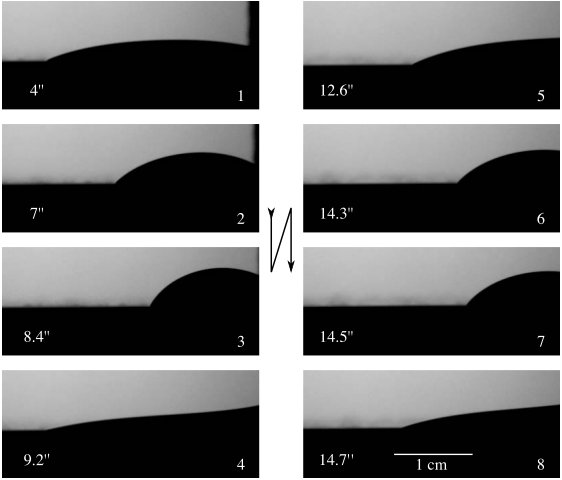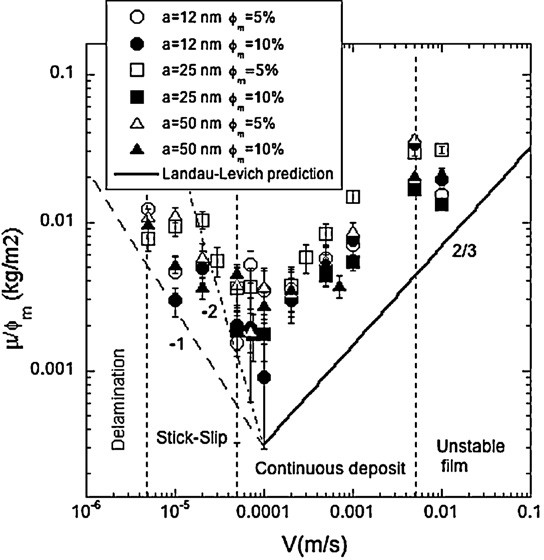Drying of colloidal suspensions
With Guillaume Berteloot, Anna Hoang, Pirouz Kavehpour, François Lequeux, Laurent Limat, Chi-Tuong Pham, Emmanuelle Rio, …

The drying of a colloidal suspension leads to the quick formation of deposits at the contact line. The deposit can grow quickly enough at the edge of an advancing meniscus to pin it. This leads to stick-slip motion of a pushed drop, as is seen in the image sequence above. Note that the images are taken in the reference frame of the pusher located on the right hand side, and pushing to the left, so that the substrate moves to the right (Rio et al 2006).

The concentration and deposit formation at the contact line has an interesting consequence on the achievable coating thickness in dip-coating processes: there is a minimum coating thickness. Indeed, while it is well known that the quantity of entrained fluid, and therefore the quantity of solute forming the coating, will increase with speed at high withdrawal speeds (Landau-Levich regime), the coating thickness decreases with speed in the low velocity regime. In the latter regime, there is no film entrainment, and the deposit is formed at the contact line. Reducing the withdrawal speed leaves more time for solute to be drawn towards the contact line region where evaporation is high, hence the increased coating thickness. The graph above shows the coating mass per unit area that we measured at various speeds, with a minimum at the cross-over between the two coating regimes Berteloot et al 2013.
The PhD thesis of Guillaume Berteloot (2009) and the PhD thesis of Emmanuelle Rio (2005) describe our experiments around drying suspensions in more detail (in french).
Last modified: 31 Jan 2016